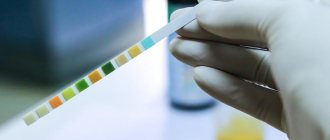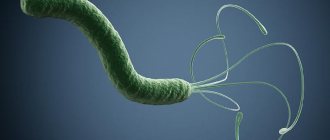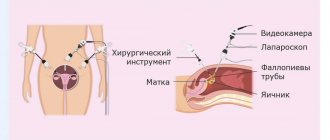Nails are not only a decoration for a person's hands, but, above all, they have a protective function for the fingertips and they also facilitate precise handling. Unfortunately, nails are often affected by numerous diseases.
Nail diseases - types
Many nail diseases are the result of poor nutrition, low in vitamins and minerals. Split nails usually indicate a lack of calcium and zinc.
Their excessive fragility is due to a lack of vitamins of the silicon, magnesium, iron and B group. White spots on the nails should lead to replenishment of calcium deficiency, and longitudinal grooves – deficiency of iron, as well as vitamins A and D.
The nail plate is also weakened by contact with detergents and certain diseases, including diabetes and thyroid disease.
Flat plates
In medicine, this deformation is called platonychia. In the vast majority of cases, this is a common congenital anomaly, from which only the appearance of the hands is affected. Platonychia may also be associated with the type of professional activity, for example, constant contact with irritating substances.
But doctors are able to predict the presence of the disease by the appearance of the nails:
- psoriasis;
- cirrhosis of the liver;
- autoimmune pathologies, including rheumatoid arthritis.
The fact that the flat shape of the nails is caused precisely by pathology is indicated by the deformation of all plates.
Nail diseases - symptoms
Symptoms of nail disease are visible to the naked eye. Therefore, they should pay special attention to:
- nail color - white, yellow, green, gray, brown can be a symptom of the disease;
- the shape of the nails - scapular, gonadal, tubular - is incompatible with the natural growth of the nail;
- nail structure - longitudinal grooves and transverse grooves should attract attention;
- general condition of nails – brittle, peeling;
- condition of the skin around the nails - redness, swelling, bumps.
What does the color change mean?
Everyone knows that a smoker's nails are dark yellow. But there are also plates with a completely unnatural shade, alien to the body. And most often it is caused by developed pathology.
Based on the color of the nails, the disease can be diagnosed by a doctor in a couple of minutes:
- green - Pseudomonas aeruginosa infection;
- reddish - chronic leukemia;
- whitish - cirrhosis of the liver;
- bluish with a purple tint - severe diseases of the cardiovascular system;
- yellow - any liver pathology, including fatty degeneration.
It is worth immediately clarifying that the doctor makes a preliminary diagnosis based on a combination of symptoms. Therefore, you should not panic or suspect oncological pathology if you notice a reddish tint. Redness of the skin under the nails may be a fungus, a sign of vitamin deficiency, or a consequence of removing red nail polish.
Nail diseases - treatment
If you notice any symptoms, you should consult a dermatologist. It is necessary to find the cause of the change and exclude serious diseases, such as: thyroid disease, syphilis, anemia, lack of micro and macro elements. Treatment depends on the type and severity of the disease. Some of them are treated with topical medications. In more severe cases, surgery may be required. Therapy is selected individually, taking into account the needs of the patient.
Unfortunately, nail diseases are quite common. Most often, they affect women who use cosmetic procedures in salons where hygienic conditions are not properly maintained.
Diagnosis and choice of doctor
Nails are a derivative of the skin, so the examination should begin with a visit to a dermatologist. At the first stage, the doctor will conduct a visual examination. Next, you will need to undergo general tests and conduct laboratory tests directly on the nails.
At the medical center, they will do a microscopic examination of the plates for the presence of pathogenic fungi, take a scraping and conduct a screening. All types of diagnostics are carried out in our own laboratory in the shortest possible time - from two working days. The clinic is attended by an experienced dermatologist who will find the cause of the problem. If necessary, refer you for consultation to other specialists.
The most common nail diseases
Nail candidiasis is a fungal disease of the nails that causes severe blackening, perigungual swelling and pain. Treatment is based on antifungal drugs.
Nail psoriasis occurs in combination with skin psoriasis and is an important part of the diagnosis of this disease. The nails become thickened, brittle, and have numerous transverse grooves and pinpoint cavities. In advanced forms of the disease, extensive onycholysis may develop.
Leukonychia is the so-called nail vitiligo, which appears as white spots. It is not a disease in itself, but can be a symptom of infection, ringworm, zinc and protein deficiencies, and kidney or heart failure.
Onycholysis is the separation of the stratum corneum from the finger. It appears gradually, starting from the edge of the nail. The nail becomes distorted and changes color to white, yellowish and even greenish. The causes of this disease can be mechanical damage, improperly performed care procedures, bacterial and fungal infections, harmful effects of chemicals, psoriasis or thyroid hormone disorders.
You can protect yourself from these diseases by following hygiene rules and choosing sterile beauty salons equipped with professional disinfection equipment.
When and why a manicure or pedicure can harm your nail health
In some situations, manicure and pedicure can cause problems. These include:
Allergy to cosmetics, varnishes, gel polishes, extension complexes
If, after a manicure, there is burning, redness, or blistering in the area where the polish was applied, this may indicate an allergy. Contact your specialist as quickly as possible to remove the coating, take antihistamines and consult a doctor. An allergy test or exclusion method will help remove the allergen and continue to enjoy the beautiful coating.
Poorly executed hardware manicure
Failure to comply with a number of requirements when working with the device can result in cuts, cuticle rupture, cutting of the skin down to the sensitive layer and, as a result, painful conditions. Always tell your nail technician if you have closely spaced blood vessels, sensitive skin, thin cuticles, or simply experience pain during manicure. Hardware manicure is painless.
Failure to comply with standards for disinfection and sterilization of manicure instruments
Pay attention or directly ask the specialist how instruments are sterilized in the salon or at home, if the procedure is at home. Require the use of disposable files and buffs. You can bring your own. Before the procedure, the master must apply antiseptic to himself and your hands.
Failure to comply with the deadlines for correction of extended nails
Have you been wearing extended nails for more than 4 weeks? In vain! It's time to adjust the shape to avoid tears and detachments. The recommended intensity of correction is once every 3-4 weeks. The master will correct the architecture of the plate and apply a new layer of material in the stress zones of the fold on the sides of the cuticle. Learn more about how to correct and restore the appearance of nails for different types.
Professionalism of the master
Contact only a trusted, recommended specialist or salon so as not to regret a poorly done manicure or even microtraumas and infections. Nails require the same careful and careful handling in compliance with all hygiene standards as the entire body. The stingy pays twice, do not skimp on the quality of mandatory procedures.
Foot skin problems and what a pedicurist should do if they exist
How do you take care of the health of your nails, what procedures do you consider mandatory in your care?
Comment
The most common toenail diseases
Onychomycosis is one of the most common toenail diseases, but it can also appear on the toenails. Fungi, or rather dermatophytes, thrive in the nail environment.
The infection usually occurs when using swimming pools or public showers. Mycosis manifests itself as a color change to yellow, brown or white. There is also deformation of the nail plate and onychlinosis. Treatment requires the administration of appropriate antifungal drugs. If treatment is unsuccessful, surgical removal of the nail may also be necessary.
In prevention, foot hygiene, thorough drying after each wash and cutting nails short are important. You cannot lend shoes, a towel or nail scissors to anyone.
An ingrown toenail is most often found on the largest toenail and is the result of improper care or shoes that are too tight. The cause may also be a nail disease, such as mycosis. Depending on the cause, a treatment method is established.
What is the norm
The nails of a healthy person are smooth, shiny, pale pink in color, with a pronounced whitish hole at the base.
At the same time, the nail plate is constantly renewed, growing by about one millimeter in a week. irecommend.ru
With age, the nail plate thickens and becomes more brittle. This is part of the body's natural aging process. Fragility is also characteristic of the nails of pregnant women. But within six months after giving birth, everything usually returns to normal.
It is acceptable if nails break due to a lack of vitamins or turn yellow due to poor-quality varnish. Sometimes the nail plate can even turn black and fall off if the finger is pinched or hit.
In a healthy person, fingernails are completely restored within 4-6 months, and toenails - within 6-8 months.
But there are persistent pathologies that we often don’t even pay attention to. But in vain. Some changes in the shape, color and texture of nails, as well as the skin around them, may indicate disturbances in the functioning of internal organs and the presence of a variety of, sometimes serious, diseases.
Nail disease in children
Nail diseases in children are most often caused by infections. This leads not only to destruction of the nail plate, but also to the appearance of open wounds.
Warts are caused by HPV that enters the body through mechanical damage. Symptoms include red or grayish nodules. Most often they appear next to the nail, but it happens that the wart can be located under the nail plate. This causes pain and discomfort. Their treatment is very burdensome. Chemicals, laser therapy and eventually surgical methods are used.
Mycosis of the nails in children is also common. This is due to reduced immunity and frequent trips to the pool or sports club. It is necessary to ensure that the child only uses his own towel and always remembers hygiene. Treatment is long and burdensome, so prevention is better than cure.
Section: Articles Tags: dermatology
Onychogryphosis - "bird's claw"
The diagnosis of nails of this shape is made quickly enough. They have the shape of a bird's claw - the plate is strongly curved, very dense, yellow, dirty gray or black. First, doctors rule out burns, frostbite, onychomycosis, and the consequences of wearing tight, uncomfortable shoes. And then they send patients to laboratories for examination for generalized candidiasis - a fungal infection of internal organs. It is extremely rare for the transformation into “bird claws” to occur in elderly people due to the natural aging of the body.
Almost like a spoon
Another nail defect that calls for careful attention to your health is the so-called spoon-shaped nails, or koilonychia. In this case, the nail plate seems to sink down, and the edges are turned outward, and the nail thereby resembles a spoon. There may even be a drop of water “stuck” in it - do this test and find out if you have koilonychia. There are many reasons for this pathology: hormonal imbalances, lack of iron in the body, injuries, exposure to aggressive chemicals, sudden changes in temperature and even genetics.
Tricky enemy
I don’t think anyone needs to explain what nail fungus looks like, but some points still need to be clarified. A fungal infection can really ruin your nails! First, they begin to break and crumble from the free edge, and if you do not consult a doctor or self-medicate (and fungus is an insidious thing, and you cannot cope with it without a specialist), then the infection can affect almost the entire nail and even its matrix, i.e. .root. This can subsequently lead to impaired nail growth.






